A Concise Public Speaking Handbook 4th Edition Beebe Beebe Test Bank
$35.00
A Concise Public Speaking Handbook 4th Edition Beebe Beebe Test Bank
- Description
- Reviews (0)
Description
You will receive this product immediate after placing the order
978-0205897216
Test Bank Chapter 1
1-1 Multiple Choice
1-1.1. Studying public speaking will result in long-term advantages related to _____ and _____.
A) empowerment; employment
B) relationships; employment
C) intelligence; leadership
D) leadership; relationships
LO 1.1: Explain why it is important to study public speaking.
Topic: Why Study Public Speaking?
Page: 1
Difficulty: 1 – Easy
Skill: Factual
Answer: A
1-1.2. Rachel is called on to speak in front of her Theories of Education class, but she is not nervous because she has gained confidence and competence in her public speaking class, a term that your text calls
A) employment.
B) ethnicity.
C) effectiveness.
D) empowerment.
LO 1.1: Explain why it is important to study public speaking.
Topic: Why Study Public Speaking?
Page: 1
Difficulty: 3 – Difficult
Skill: Application
Answer: D
1-1.3. The nineteenth century practice of delivering famous speeches from history, instead of writing one’s own speeches, is
A) formulation.
B) declamation.
C) lecturing.
D) public address.
LO 1.2: Discuss in brief the history of public speaking.
Topic: The Rich Heritage of Public Speaking
Page: 2
Difficulty: 1 – Easy
Skill: Factual
Answer: B
1-1.4. Turn of the nineteenth century speakers who expressed their emotions through prescribed dramatic postures, movements, gestures, facial expressions, and tones of voice were practicing the art of
A) pontification.
B) prophesy.
C) declamation.
D) elocution.
LO 1.2: Discuss in brief the history of public speaking.
Topic: The Rich Heritage of Public Speaking
Page: 2
Difficulty: 1 – Easy
Skill: Factual
Answer: D
1-1.5. Which of the following statements BEST characterizes public speaking in the twentieth and twenty-first centuries?
A) Students of public speaking practice the arts of declamation and elocution.
B) Great orators continue to refine guidelines for public speakers.
C) Technologies let speakers reach worldwide audiences and expand the parameters of public speaking.
D) Age-old public-speaking traditions are no longer relevant as we develop new and improved methods for addressing some of the most difficult challenges in history.
LO 1.2: Discuss in brief the history of public speaking.
Topic: The Rich Heritage of Public Speaking
Page: 2
Difficulty: 2 – Medium
Skill: Conceptual
Answer: C
1-1.6. Translating ideas and images in the speaker’s mind into verbal or nonverbal messages that an audience can understand is termed
A) listening.
B) feedback.
C) encoding.
D) decoding.
LO 1.3: Sketch and explain a model that illustrates the components and the process of communication.
Topic: The Communication Process
Page: 3
Difficulty: 1 – Easy
Skill: Factual
Answer: C
1-1.7. If a speaker has trouble finding words to convey his or her ideas or sends contradictory nonverbal symbols, listeners may not be able to _____ the speaker’s verbal and nonverbal symbols back into a message.
A) encode
B) codify
C) decode
D) externalize
LO 1.3: Sketch and explain a model that illustrates the components and the process of communication.
Topic: The Communication Process
Page: 3
Difficulty: 2 – Medium
Skill: Conceptual
Answer: C
1-1.8. While listening to a speech about the rules of cricket, the speaker uses jargon that Terry doesn’t understand. In this circumstance, Terry is experiencing problems with
A) feedback.
B) decoding.
C) encoding.
D) the channel.
LO 1.3: Sketch and explain a model that illustrates the components and the process of communication.
Topic: The Communication Process
Page: 3
Difficulty: 3 – Difficult
Skill: Application
Answer: B
1-1.9. What is the term for something that interferes with the communication process?
A) channel confusion
B) decoding
C) noise
D) encoding
LO 1.3: Sketch and explain a model that illustrates the components and the process of communication.
Topic: The Communication Process
Page: 4
Difficulty: 1 – Easy
Skill: Factual
Answer: C
1-1.10. A speaker transmits a message through two channels:
A) auditory and eye contact.
B) visual and auditory.
C) visual and nonverbal.
D) voice and inflection.
LO 1.3: Sketch and explain a model that illustrates the components and the process of communication.
Topic: The Communication Process
Page: 3
Difficulty: 1 – Easy
Skill: Factual
Answer: B
1-1.11. Which of the following is affected by a speaker’s posture and gestures?
A) visual communication channel
B) auditory communication channel
C) internal noise
D) context
LO 1.3: Sketch and explain a model that illustrates the components and the process of communication.
Topic: The Communication Process
Page: 3
Difficulty: 2 – Medium
Skill: Conceptual
Answer: A
1-1.12. The roar of a lawn mower or a noisy air conditioner are examples of
A) feedback.
B) misinterpretation.
C) external noise.
D) internal noise.
LO 1.3: Sketch and explain a model that illustrates the components and the process of communication.
Topic: The Communication Process
Page: 4
Difficulty: 3 – Difficult
Skill: Application
Answer: C
1-1.13. Dave has signed up to be last in the speaking order because his twenty-first birthday was the day before and he just had to celebrate. He feels so tired and hung over that he doesn’t even realize it’s time for him to speak until the teacher calls his name…twice. What is Dave experiencing?
A) internal noise
B) an encoding-decoding breakdown
C) external noise
D) poor channel selection
LO 1.3: Sketch and explain a model that illustrates the components and the process of communication.
Topic: The Communication Process
Page: 4
Difficulty: 3 – Difficult
Skill: Application
Answer: A
1-1.14. Colin had researched, outlined, and practiced his speech carefully but on the day he was to give the speech, his girlfriend broke up with him. He found it impossible to keep his mind on his speech or his audience and continually lost his place. What public speaking term BEST describes this situation?
A) psychological noise
B) speaker anxiety
C) auditory channel deficiency
D) physiological noise
LO 1.3: Sketch and explain a model that illustrates the components and the process of communication.
Topic: The Communication Process
Page: 4
Difficulty: 3 – Difficult
Skill: Application
Answer: A
1-1.15. Without an audience to hear and provide _____, public speaking serves little purpose.
A) noise
B) encoding
C) feedback
D) context.
Answer: C
LO 1.3: Sketch and explain a model that illustrates the components and the process of communication.
Topic: The Communication Process
Page: 4
Difficulty: 2 – Medium
Skill: Conceptual
Answer: C
1-1.16. The environment or situation in which a speech occurs is termed
A) a channel.
B) feedback.
C) the context.
D) the message.
LO 1.3: Sketch and explain a model that illustrates the components and the process of communication.
Topic: The Communication Process
Page: 4
Difficulty: 1 – Easy
Skill: Factual
Answer: C
1-1.17. A speaking venue that is hot, crowded, or poorly lit can make it difficult for a speaker to deliver a speech and an audience to receive a speech. This demonstrates the impact of _____ on both speaker and audience.
A) context
B) channels
C) encoding
D) decoding
LO 1.3: Sketch and explain a model that illustrates the components and the process of communication.
Topic: The Communication Process
Page: 4
Difficulty: 3 – Difficult
Skill: Application
Answer: A
1-1.18. George just transferred to a university in southern California. In his speech class, he gave an introductory speech that had a great deal of humor. He thought if he made jokes about his Texas hometown and the university he had transferred from, the audience would like him. But the audience didn’t laugh at his humor or appreciate his speech. Which of the following statements BEST applies to this situation?
A) George didn’t adapt his speech according to the cultural traditions and expectations of his audience.
B) George should have known that humor only works when a professional uses it.
C) George didn’t do anything wrong; the audience was just uninformed and uneducated.
D) George should have known that most audiences don’t appreciate humor in a speech.
LO 1.3: Sketch and explain a model that illustrates the components and the process of communication.
Topic: The Communication Process
Page: 4-5
Difficulty: 3 – Difficult
Skill: Application
Answer: A
1-1.19. One of the ways that public speaking and conversation are different is that public speaking is
A) unplanned.
B) more formal.
C) less complicated.
D) more casual.
LO 1.3: Sketch and explain a model that illustrates the components and the process of communication.
Topic: The Communication Process
Page: 6
Difficulty: 2 – Medium
Skill: Conceptual
Answer: B
1-1.20. During her speech to a student group about the importance of voter registration, Celine spoke very casually, sat on the table in the front of the room, and was dressed in shorts and an old t-shirt. Which of the following statements BEST describes this situation?
A) Celine adapted to her audience well by making her speech an informal event.
B) Celine did nothing wrong by taking a casual approach to a casual topic.
C) Celine violated several ethical principles about public speaking.
D) Celine ignored the rule that public speaking is more formal than conversation.
LO 1.3: Sketch and explain a model that illustrates the components and the process of communication.
Topic: The Communication Process
Page: 6
Difficulty: 3 – Difficult
Skill: Application
Answer: D
1-2 True/False
1-2.1. The ability to speak with competence and confidence will provide empowerment.
LO 1.1: Explain why it is important to study public speaking.
Topic: Why Study Public Speaking?
Page: 1
Difficulty: 1 – Easy
Skill: Factual
Answer: True
1-2.2. Public speaking skills can make you more confident, but they have no impact on your long-term employment success.
LO 1.1: Explain why it is important to study public speaking.
Topic: Why Study Public Speaking?
Page: 1
Difficulty: 1 – Easy
Skill: Factual
Answer: False
1-2.3. During this Golden age of public speaking, the Greek philosopher Aristotle formulated, and Roman orators refined, guidelines for speakers that we still follow today.
LO 1.2: Discuss in brief the history of public speaking.
Topic: The Rich Heritage of Public Speaking
Page: 2
Difficulty: 1 – Easy
Skill: Factual
Answer: True
1-2.4. In the twenty-first century, students of public speaking often practice the art of declamation—the delivery of an already famous address.
LO 1.2: Discuss in brief the history of public speaking.
Topic: The Rich Heritage of Public Speaking
Page: 2
Difficulty: 1 – Easy
Skill: Factual
Answer: False
1-2.5. It is an audience member’s responsibility to properly encode a speaker’s remarks.
LO 1.3: Sketch and explain a model that illustrates the components and the process of communication.
Topic: The Communication Process
Page: 3
Difficulty: 1 – Easy
Skill: Factual
Answer: False
1-2.6. A receiver’s perception of a message is dependent on his or her past experiences, attitudes, beliefs, and values.
LO 1.3: Sketch and explain a model that illustrates the components and the process of communication.
Topic: The Communication Process
Page: 3
Difficulty: 1 – Easy
Skill: Factual
Answer: True
1-2.7. Slang expressions are perfectly appropriate for most types of public speaking.
LO 1.3: Sketch and explain a model that illustrates the components and the process of communication.
Topic: The Communication Process
Page: 6
Difficulty: 1 – Easy
Skill: Factual
Answer: False
1-2.8. Public speaking is more fluid and interactive than conversation.
LO 1.3: Sketch and explain a model that illustrates the components and the process of communication.
Topic: The Communication Process
Page: 6
Difficulty: 1 – Easy
Skill: Factual
Answer: False
1-2.9. Public speaking is more planned and formal than conversation.
LO 1.3: Sketch and explain a model that illustrates the components and the process of communication.
Topic: The Communication Process
Page: 5-6
Difficulty: 1 – Easy
Skill: Factual
Answer: True
1-2.10. In a two-person communication transaction, both individuals are sending and receiving at the same time.
LO 1.3: Sketch and explain a model that illustrates the components and the process of communication.
Topic: The Communication Process
Page: 5
Difficulty: 1 – Easy
Skill: Factual
Answer: True
1-3 Essay
1-3.1. Discuss the rich heritage of public speaking beginning with the Greeks to the present. Give specific examples of the differences in presentation style for each era.
LO 1.2: Discuss in brief the history of public speaking.
Topic: The Rich Heritage of Public Speaking
Page: 2
Difficulty: 2 – Medium
Skill: Conceptual
1-3.2. Explain how encoding and decoding operate in the public speaking context.
LO 1.3: Sketch and explain a model that illustrates the components and the process of communication.
Topic: The Communication Process
Page: 3
Difficulty: 2 – Medium
Skill: Conceptual
1-3.3. Internal and external noise can interfere with the transmission of a message. Briefly define these two terms and offer an example of each.
LO 1.3: Sketch and explain a model that illustrates the components and the process of communication.
Topic: The Communication Process
Page: 4
Difficulty: 3 – Difficult
Skill: Application
1-3.4. List and discuss the components of the visual channel of communication.
LO 1.3: Sketch and explain a model that illustrates the components and the process of communication.
Topic: The Communication Process
Page: 3
Difficulty: 2 – Medium
Skill: Conceptual
1-3.5. Discuss the impact of context on both the speaker and audience. Provide specific examples of how context can affect the public speaking experience.
LO 1.3: Sketch and explain a model that illustrates the components and the process of communication.
Topic: The Communication Process
Be the first to review “A Concise Public Speaking Handbook 4th Edition Beebe Beebe Test Bank”
You must be logged in to post a review.



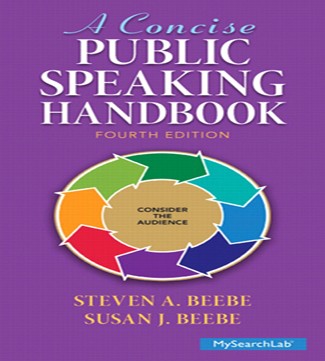
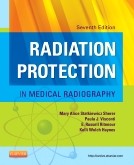
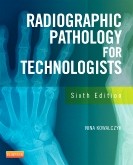
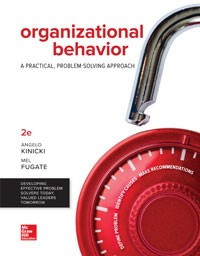
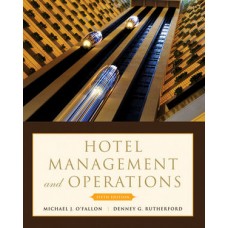
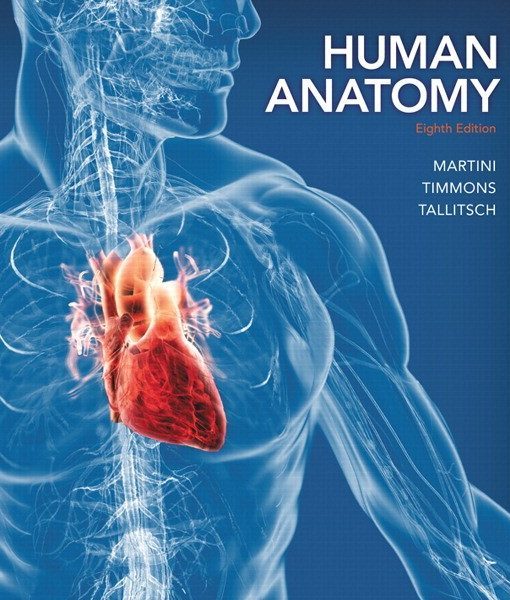

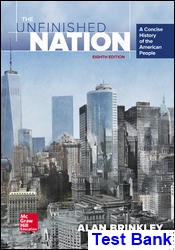


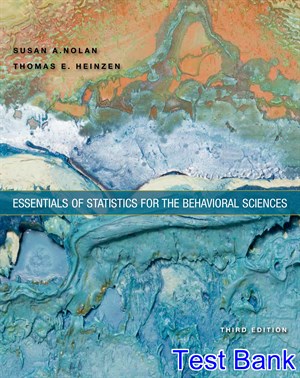
Reviews
There are no reviews yet.